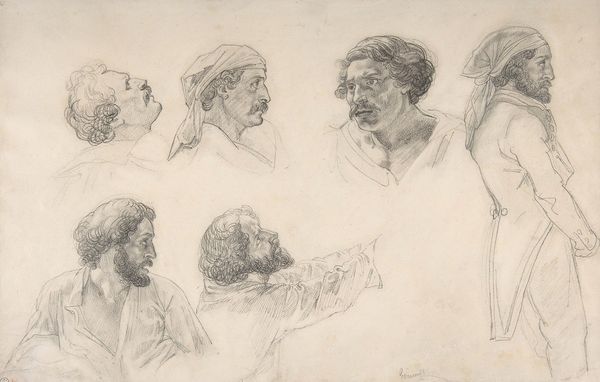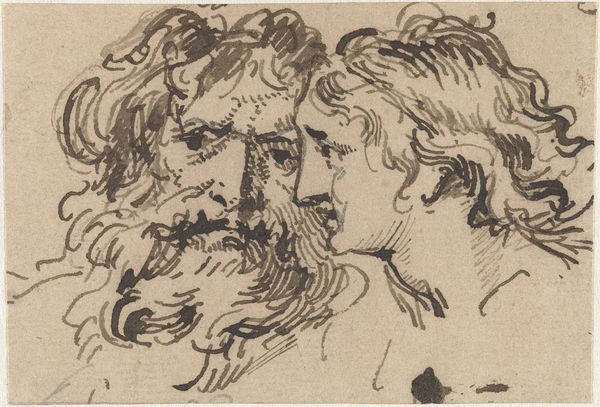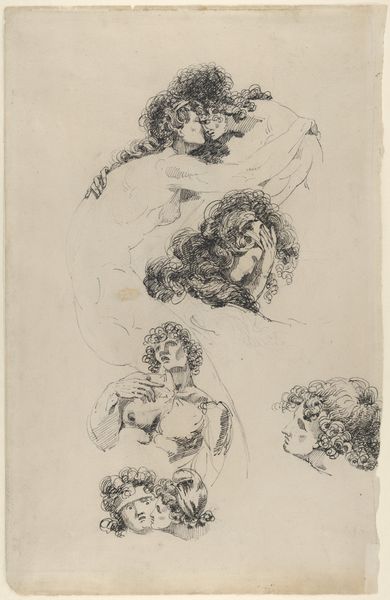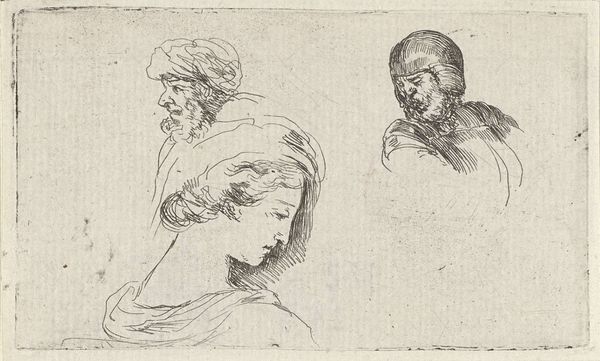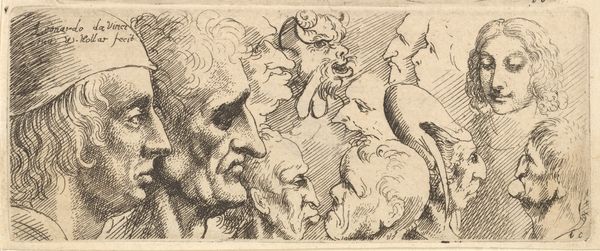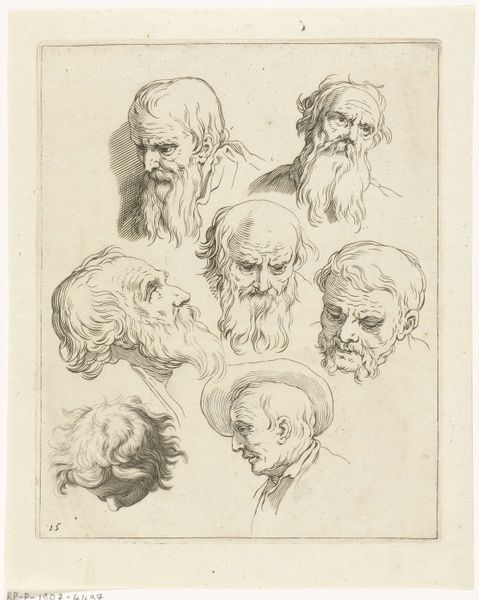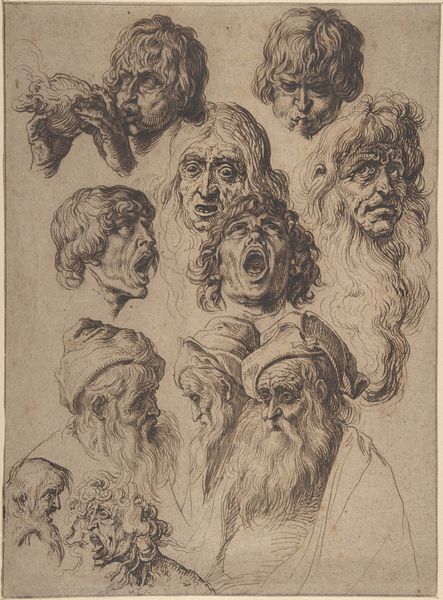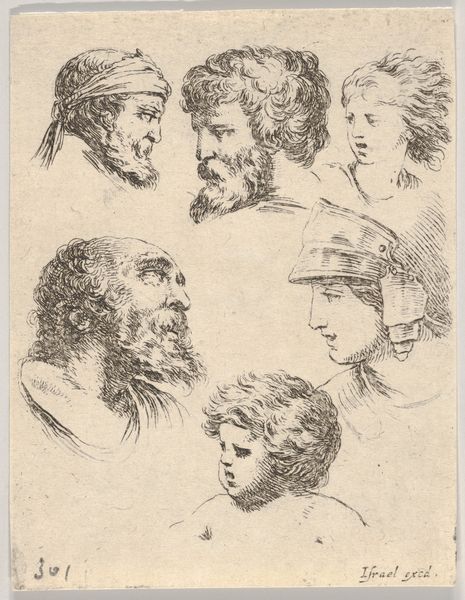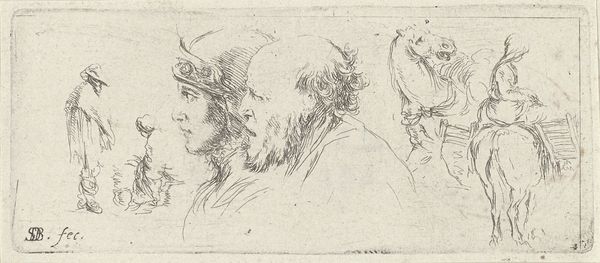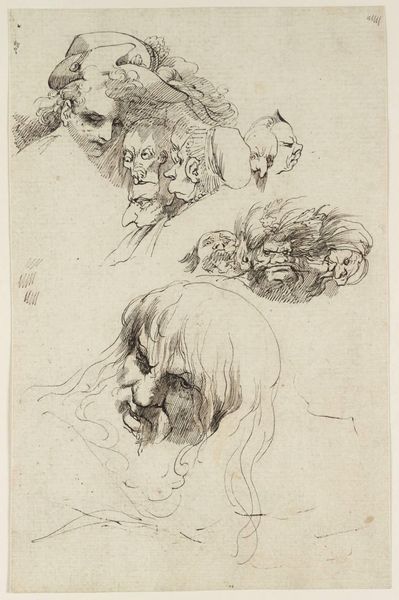
drawing, paper, ink
#
portrait
#
drawing
#
baroque
#
paper
#
form
#
ink
#
line
#
academic-art
Dimensions: height 127 mm, width 199 mm
Copyright: Rijks Museum: Open Domain
Editor: This is "Studieblad met tien koppen" – "Study Sheet with Ten Heads" – a drawing by Jacob de Wit, created sometime between 1705 and 1754, using ink on paper. It strikes me as a glimpse into the artist's process, almost like a visual record of his practice. What do you see in this collection of faces? Curator: Well, seen through the lens of art history, it's fascinating as a document of academic practice. De Wit was working during a time when the academies held significant power, shaping artistic taste and dictating what was considered "good" art. Drawings like these were crucial to that system. Editor: How so? Curator: Students and masters alike would create such sheets to master anatomy, expression, and classical forms. They'd study antique sculptures and life models, diligently copying features to internalize the ideal human form, filtered through the baroque aesthetic, of course. De Wit, as a prominent figure, clearly participated in and perpetuated these conventions. It embodies a specific cultural moment in art education. Do you notice how most faces borrow from greco-roman sculptures? Editor: Yes, especially the more idealized ones at the top. It is really a useful document of the history of teaching in the arts. What does that repetitive copying ultimately serve? Curator: Ultimately, it standardized a visual language, contributing to the dominance of certain styles and subjects within the art world. But also, access! Remember access to education wasn't readily available. What did the existence of these 'exemplars' make available that otherwise wasn't? Editor: It sounds like studying these faces offered insights not just to anatomy, but to systems of power and influence that defined the art world. I'll never look at a sketch the same way. Curator: Exactly, we have to go beyond the pretty picture. Every sketch embodies so much socio-historical and institutional history. Thanks for noticing today!
Comments
No comments
Be the first to comment and join the conversation on the ultimate creative platform.

